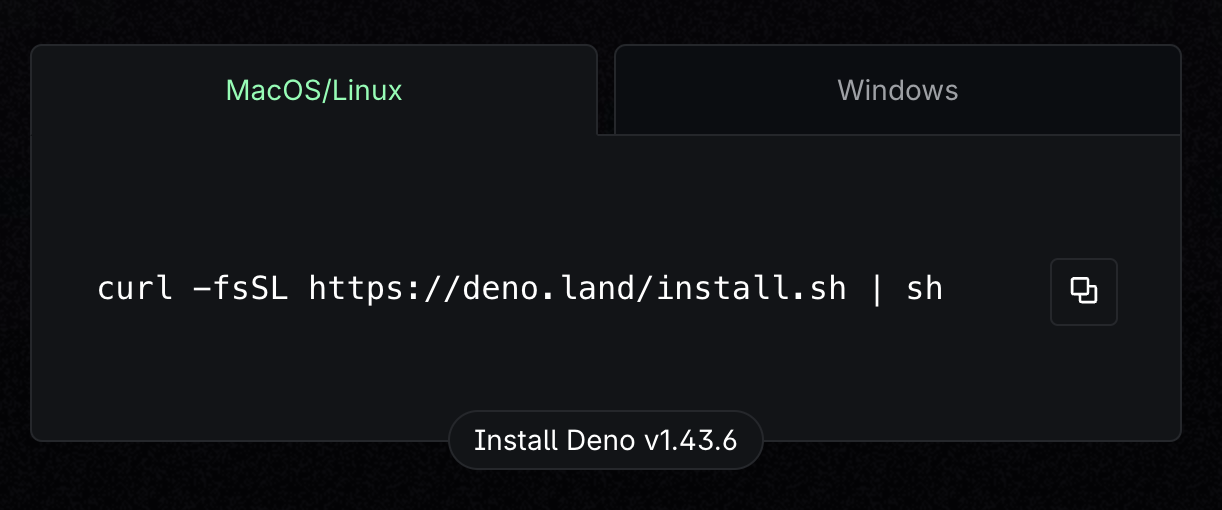Let's use the wonderful Dax tool to write a Pipedown script... to install Pipedown!
import $ from "jsr:@david/dax";
Next we can piggyback on some Deno Standard Library code to figure out which OS we're on.
Today I learned: Since Deno is built upon web standards we can just use the
navigatorobject to get the OS!
No doubt I'm gonna offend some pro's here, but I'm a 1x developer, so we will just assume if you're not on windows, you're on something we can run bash-y commands on!
Check the navigator object to see which OS we're on, default to unix.
const { navigator } = globalThis as any;
input.os = "unix";
if (navigator?.appVersion?.includes?.("Win")) {
input.os = "windows";
}
Depending on which OS we're on, the Deno website tells us to install with different commands.

if(input.os === "windows") {
await $`irm https://deno.land/install.ps1 | iex`;
} else {
await $`curl -fsSL https://deno.land/install.sh | sh`;
}
console.log('Deno installed.')
Now that we have Deno installed, we can use Deno to install Pipedown.
await $`deno install -Arfg -n pd jsr:@pd/pdcli`;
console.log('Pipedown installed.')
This will install Pipedown globally on your system. Pipedown will be available anywhere by running the pd command. You can customise the command name by providing a different -n option value: deno install -Arfg -n {your_name} jsr:@pd/pdcli
Or update the last codeblock to to add your own command name!
const yourCommandName = 'pd'
await $`deno install -Arfg -n ${yourCommandName} jsr:@pd/pdcli`;
console.log('Pipedown installed.')
This whole markdown file is runnable using pd run installationAdvanced.md, and, if you have Pipedown installed (😂) it will do what it says on the tin!
However, this entire example could be compiled into a binary with deno compile ./.pd/installationAdvanced/index.ts and shipped as a single executable.
I suppose this is the next step for Pipedown's installation process! Watch this space!